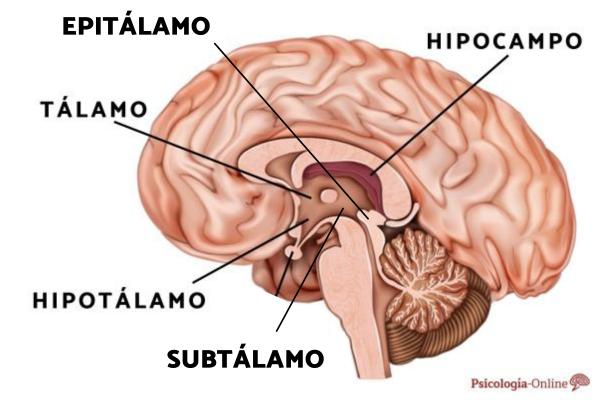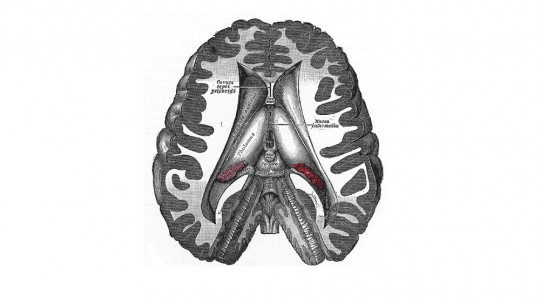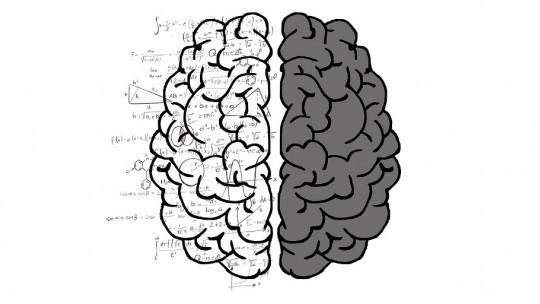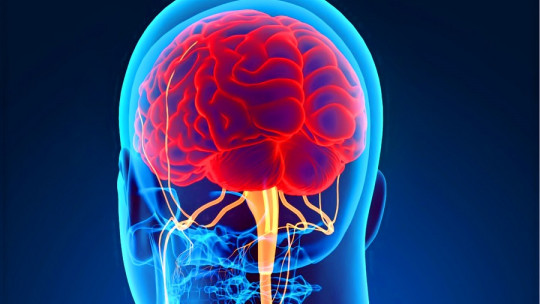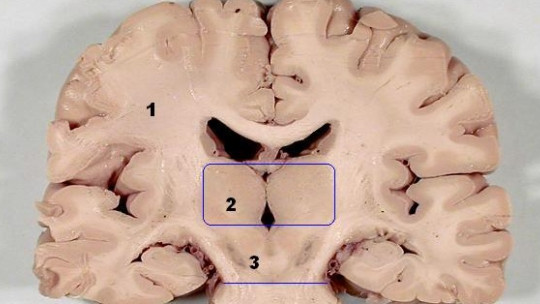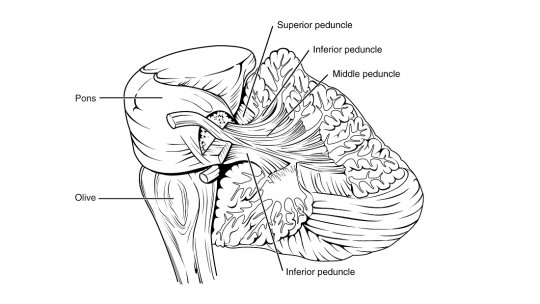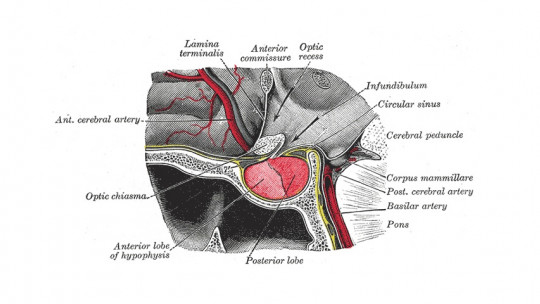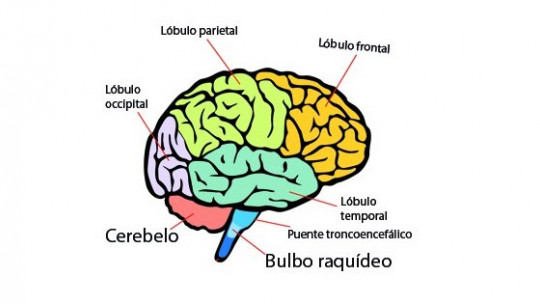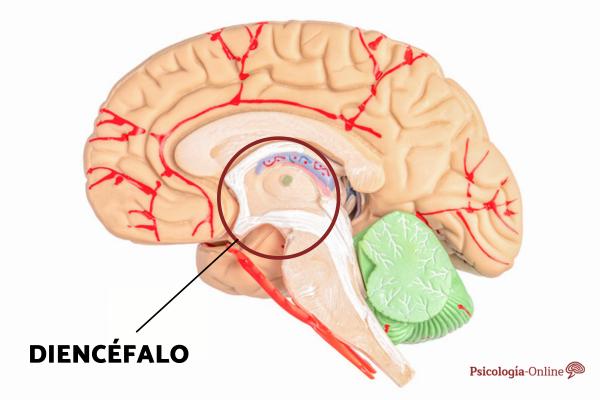The diencephalon constitutes one of the main structures of the brain and develops numerous functions that allow the proper functioning of the biological processes of the human organism. Specifically, the diencephalon is an anterior region of the brain, connected to the middle part of the brain, which, together with the spinal cord, form the Central Nervous System. This structure is vitally important for our survival.
Are you interested in knowing what it is about and why it is so important? In this Psychology Online article you can discover more about brain anatomy and, specifically, about the diencephalon: what it is, its parts and functions performing.
What is the diencephalon
The diencephalon is one of the main structures of the brain. The diencephalon is part of the brain , which, together with the spinal cord, constitute the Central Nervous System. The diencephalon is located in the middle part of the brain, below the corpus callosum and the fornix. The structures of the diencephalon maintain connections with the entire nervous system, therefore, it has a essential role in the functioning of numerous brain processes
What is the importance of the diencephalon and what structures does it contain? It is a basic structure that connects the lower structures with the higher structures of the brain , connecting the affective pathways with the motor pathways. This brain structure is composed of gray matter, a set of neuronal bodies, which provides the diencephalon with neuronal nuclei. Likewise, it contains white matter particles that are responsible for neuronal connections.
In this article you will find information about the differences between the gray and white matter of the brain.
What parts does the diencephalon have?
What structures does the diencephalon contain? This is divided into five main parts: thalamus, epithalamus, subthalamus, hypothalamus and third ventricle. Next, we will see what they are and what functions each part of the diencephalon has:
- Thalamus : It is made up of the anterior, medial and lateral thalamus. This brain structure constitutes approximately 80% of the diencephalon and is made up of 80 different neuronal nuclei. The thalamus is mainly responsible for transmitting sensory stimuli to the appropriate brain region, except for smell. In this article you will find more information about the thalamus: what it is, functions and location.
- Epithalamus : It is a small structure that is located in front of the thalamus. The epithalamus is part of the limbic system, therefore, it collaborates in the creation of sensations of pleasure and in the development of instinctive behaviors. The epithalamus stands out for containing the pituitary gland, a structure made up of numerous neurons that are responsible for regulating melatonin, a hormone that regulates the sleep-wake cycle.
- subthalamus : is located between the midbrain, thalamus and hypothalamus. It is a complex structure that is associated with body movement, since it is connected to the motor and prefrontal cortex and the basal ganglia, a set of nuclei that collaborate in the regulation of body movement. Furthermore, this structure is linked to the production of dopamine, a neurotransmitter responsible for regulating sensations of pleasure and relaxation.
- hypothalamus : is divided into the anterior, middle and posterior hypothalamus. This structure of the brain is responsible for visceral functions along with the endocrine and vegetative system. Likewise, it is responsible for maintaining homeostasis or self-regulation of the body, regulates emotional behavior in collaboration with the limbic system and produces oxytocin, the hormone of happiness. Discover the function of the hypothalamus: location, hormones and diseases.
- third ventricle : It is a cavity of the diencephalon that is located below the thalamus and allows the circulation of cerebrospinal fluid. This structure, whose main function is to cushion any type of blow or trauma, facilitates the conservation of the structure and shape of the brain.
What are the functions of the diencephalon?
The main functions of the diencephalon are the following:
- Integrate sensory information : The diencephalon is responsible for uniting all sensory information to facilitate the work of processing said information to the brain structures in charge.
- Maintain alertness : This function is essential for survival, since the diencephalon perceives stress as a negative or unpleasant emotion.
- Keep the balance : This function is thanks to the integration of sensory information.
- Enhance long-term memory : The diencephalon, depending on the emotion it experiences in each situation, will make the relevant neural connections to store the information.
- Regulate the feeling of hunger : The diencephalon is responsible for making us feel full and indicates when we have to eat.
- Perceive emotions : This function is possible thanks to hormonal regulation and neuronal connections in the diencephalon. Discover what emotion is in psychology.
- Perform instinctive behaviors : The diencephalon is part of the limbic system or emotional brain, therefore, it collaborates in the development of instinctive responses.
- Control the activity of the visceral organs : are the organs that are located within a cavity, such as the heart or lungs.
- Carry out reflex acts or rapid and involuntary movements : These types of reflexes occur in the diencephalon and allow us to avoid certain possible damages.
- Create our personality : This function is determined by the achievement of other tasks of the diencephalon. These tasks include emotional regulation, storage of memories, making neural connections and determining our actions when faced with stimuli.
This article is merely informative, at PsychologyFor we do not have the power to make a diagnosis or recommend a treatment. We invite you to go to a psychologist to treat your particular case.
If you want to read more articles similar to Diencephalon: what it is, parts and functions we recommend that you enter our Neurosciences category.
Bibliography
- Diamond, MC, Scheibel, AB, & Elson, LM (1996). The human brain. Ariel Neuroscience. Available at: https://planetadelibrospe0.cdnstatics.com/libros_contenido_extra/28/27903_El%20cerebro%20humano.pdf
- Flores, YAL, & Gámez, MR (2020). The brain as a component of learning. Education and Development Notebooks, (120). Available at: https://www.hacienda.go.cr/Sidovih/uploads//Archivos/Articulo/cerebro-componente-aprendizaje-En-Revista%20Atlante-Cuadernos%20de%20Educaci%C3%B3n%20y%20Desarrollo, %June 20%202020-EUMED.pdf
- LI, J.Y. (2012). Patterning and compartment formation in the diencephalon. Frontiers in neuroscience, 666. Available at: https://www.frontiersin.org/articles/10.3389/fnins.2012.00066/full

